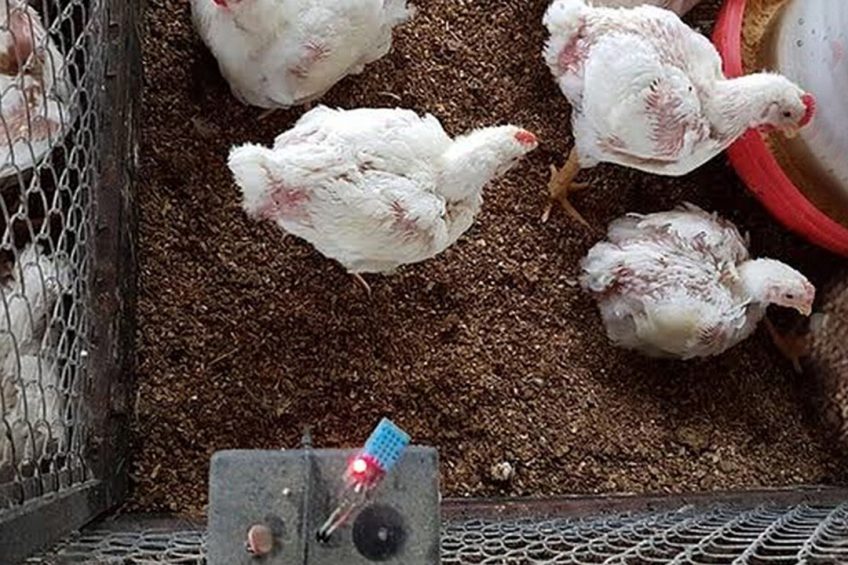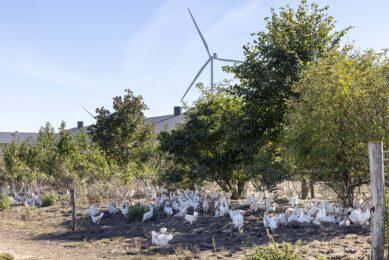Smart poultry house aims to avoid heat stress losses

Researchers at the University of São Paolo (USP) have developed an intelligent and low-cost thermal control system capable of monitoring climate conditions in a poultry shed in real-time. The system is designed to reduce heat stress and prevent losses.
According to Jornal da USP, the model uses a set of wireless sensors to measure air temperature and humidity as well as solar radiation incidence in order to mitigate performance losses and even bird deaths from heat stress. All data is stored on the internet and interpreted by software, which assesses the thermal situation in the aviary. Based on this analysis, the computer remotely defines actions and sends commands to the electronic devices connected to the equipment inside the aviary.
“The system allows farmers to turn on fans and close or open curtains remotely, allowing them to approach ideal temperature and humidity indexes. This increases the chickens’ thermal comfort,” explains Marcelo Eduardo de Oliveira, PhD student at USP (São Carlos campus). According to him, the automated process is more efficient, economical, and accurate than doing things manually, which would require producers to check the aviary several times a day and rely on thermometers to measure temperature and humidity, which are much less accurate than the sensors the new system uses.
Ease of work
“We programmed our system to collect data every 3 minutes whilst being able to turn any device on or off if necessary. This is more efficient and helps us save money. We consumed 80% less electricity during our experiment,” reveals Marcelo. To simplify their operation, an application allows the user to see if the devices are working as well as allowing them to monitor whether the humidity and temperature levels are ideal in real-time. These levels are measured by sensors which are suspended in the air as well as by devices fixed to the aviary’s walls and roof. The producers can thus switch equipment on and off remotely. The results obtained in this trial led to a scientific article being published in a magazine in Romania, and this in turn prompted the scientists to write their book “Introduction to educational robotics with Arduino – hands on! Beginner.”
 How to interpret poultry house data?
How to interpret poultry house data?
As broilers are kept in large numbers, problems that start small are often noticed (too) late. By recording and evaluating objective house date daily, you can intervene much earlier and avoid problems or expensive treatments.
System performs excellently
The shed measures about 240 m² and operates with 4 fans, 4 air conditioners and side windows with retractable canvas curtains. The ideal temperature inside aviaries for adult birds ranges between 15 and 28 ºC, with the relative air humidity varying from 40 to 80%. The achieved results showed the system performed excellently, maintaining thermal homogeneity inside and reducing the variations between the 8 monitored spots within the aviary.
“Inadequate temperatures cause fluctuations in bird behaviour and lead to decreased feed consumption, a drop in production, lower growth rate, higher water consumption, accelerated heart rate and even death in extreme cases,” explains work advisor Adriano Rogério Bruno Tech, professor at the Faculty of Animal Science and Environmental Engineering. According to him, the ideal relative air humidity also has a significant influence on animal welfare and productivity, especially if humidity levels are very low, which causes several respiratory diseases.
 Funding secured for energy efficient poultry house
Funding secured for energy efficient poultry house
Poultry houses use a lot of energy and can be the source of high emissions if not built with efficiency in mind. Now, thanks to new funding, a more efficient ‘Ideal Home’ poultry house of the future is being developed.
Low-cost system
The USP system is very low-cost (US$ 560), simple, easy to handle and scalable, and furthermore allows anyone to make adaptations according to their needs, including adaptations to the software. “Due to the easy implementation of this technology by any small producer in Brazil, we expect that chicken production will increase considerably. It is a simple yet effective system that still generates savings, so I believe that is can become a real market solution,” Marcelo concludes.












